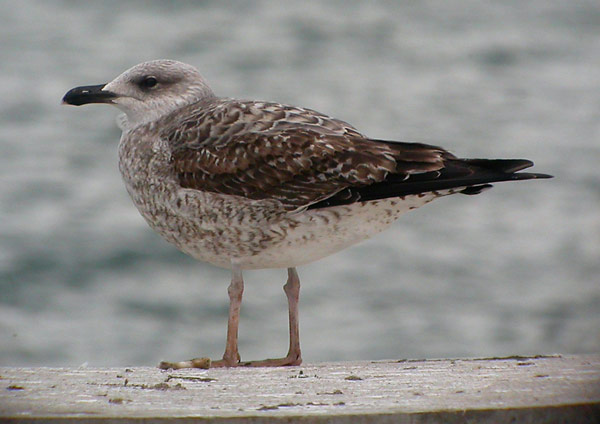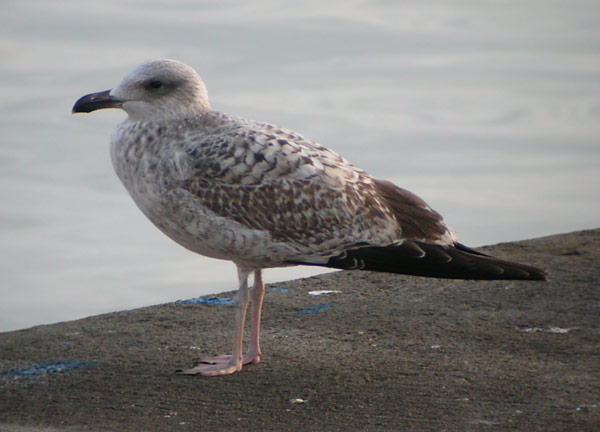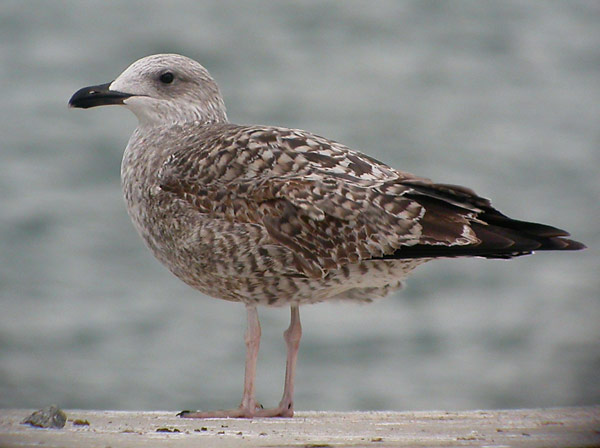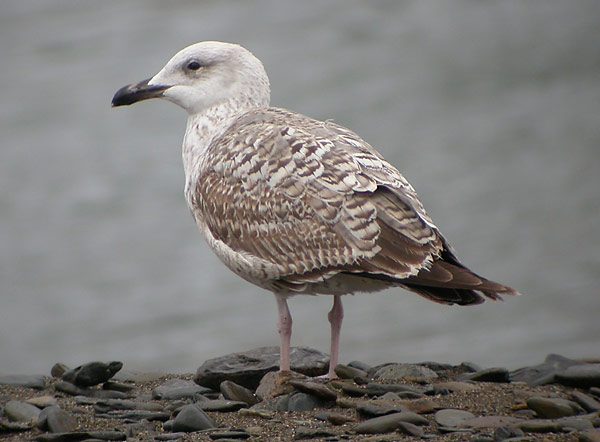| Index > Yellow-legged Gulls > | < Geelpootmeeuwen < Index |
1cy Yellow-legged Gull

1: © Ruud Altenburg, 23-11-03. Roses. All visible coverts and tertialsin this 1cy are still juvenile, none have been replaced with second generation feathers in the post-juvenile moult. This type of michahellis, with very dark coverts and therefore looking superficially like Lesser Black-backed Gull (Larus fuscus), was found quite regularly in NE Spain.

2: © Mars Muusse, 23-11-03. Roses. This 1cy has replaced only a few lesser coverts in the post-juvenile moult.

3: © Mars Muusse, 23-11-03. Roses. A bird that didn't look too healthy, which may explain the many missing medians coverts. The base of the bill has become paler.


5: © Ruud Altenburg, 25-11-03. Sète. Slightly more advanced 1cy, which has replaced several greater, median and lesser coverts.

6: © Ruud Altenburg, 23-11-03. Roses. An average looking 1cy which has replaced inner greater coverts, inner median coverts and several lesser coverts. The tertials moved by the wind are second generation.

7: © Ruud Altenburg, 23-11-03. Banyuls-sur-Mer. Besides several greater, median and lesser coverts, this rather bulky 1cy has replaced two upper tertials. The bill-base has turned pale.
| Back | Terug |